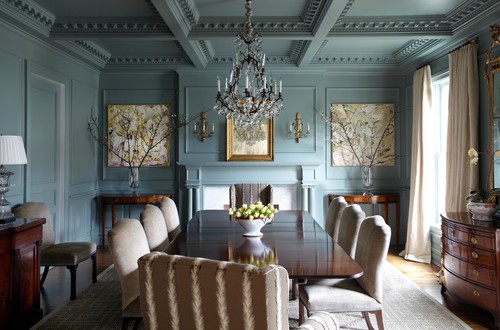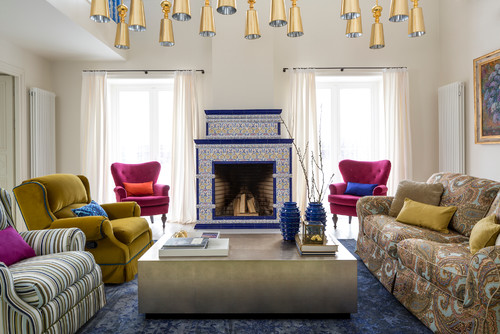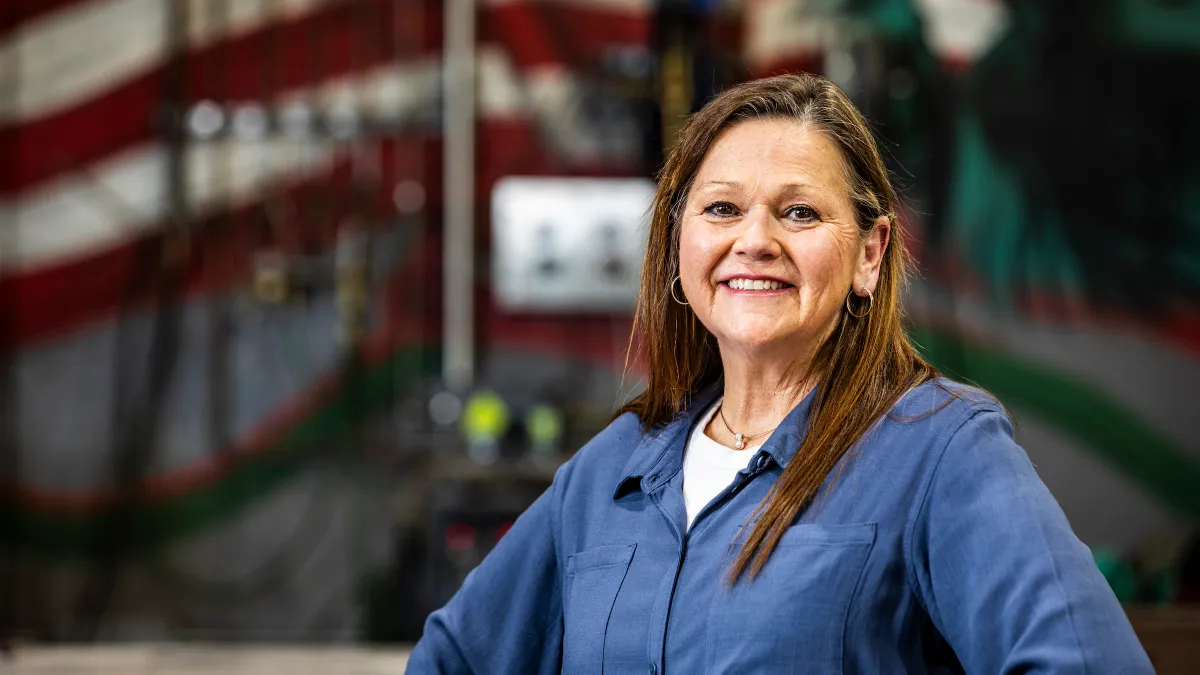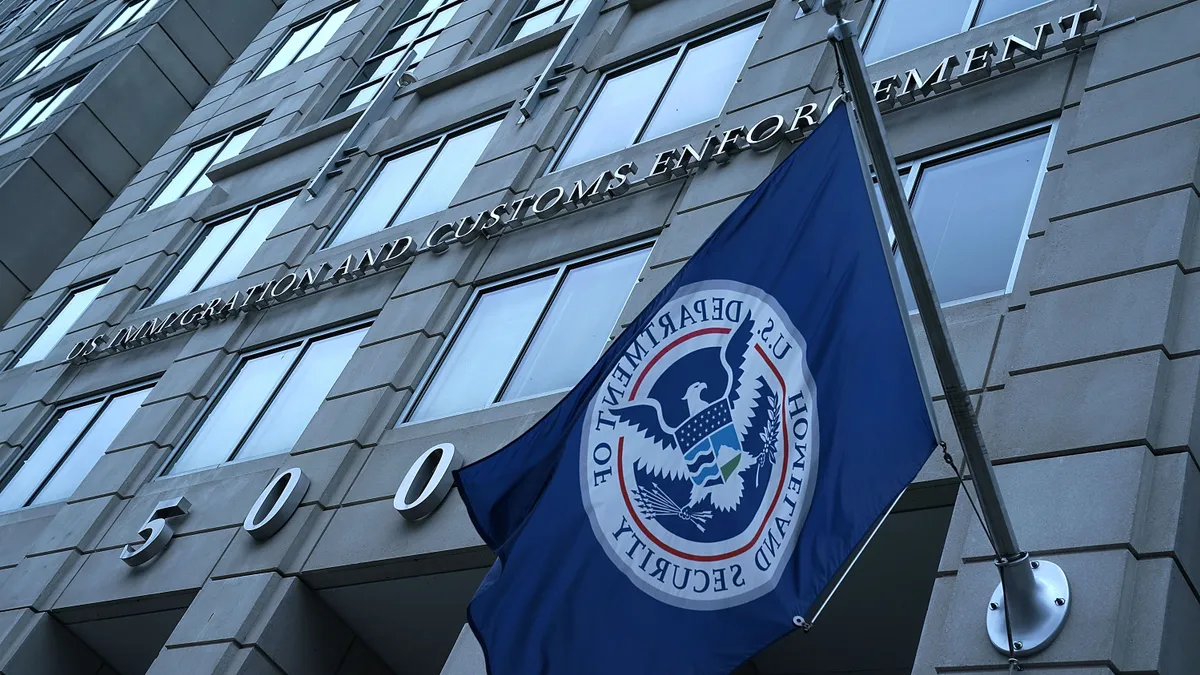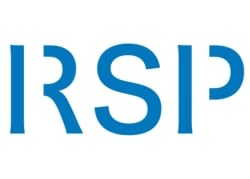Editor's Note: The following is a guest contribution from Houzz, a leading platform for home remodeling and design.
Each year, we're showered with forecasts telling us which color palette will emerge as dominant in the near future. Already announced for 2016 are Cherished Gold, Rose Quartz, pale blue Serenity and shades of off-white, as well as nuances of blue, green and gray.
But who decides which shades will be in vogue, and how do these people come to their conclusions? Should we trust the forecasts, or simply choose what we feel is right for us instead?
The influence of Pantone and Dulux
Several institutions announce the colors of the year and general color trends. The main ones are the Pantone Color Institute, Akzo Nobel Global Aesthetic Center (Dulux) and a handful of influential style agencies. In addition, several of the largest paint manufacturers also choose their main colors of the year.
"Pantone Color Institute is the most authoritative organization dealing with color," says independent designer-colorist Xenia Chupina. "The printing industry, the digital technologies sector, fashion, interior design and other areas where colors are used all need their palette fan decks ... In fact, Pantone creates a language for us, a language that everyone in the world of design can easily use to communicate with one another."
"Also, the organization doesn't just assign numbers and names to countless shades, it carries out profound analysis too," Chupina says. "It experiments with colors and, by virtue of its authority, even makes decisions for us. Each year, drawing on trends and sentiments around the world, the company selects the main color of the year and several shades for the season."
"Pantone Color Institute is a division of the Pantone company," says Vasily Dozhdalev, product manager with Pantone Russia. "It's a close-knit group of company experts and a large number of correspondents based all over the globe. The correspondents gather information pertaining to color trends worldwide, and it's not only fashion from the catwalks that they focus on — they also follow all aspects of life that one way or another relate to and influence color ... Information flows to the 'nerve center' of the Institute — that is, to experts who in the end decide on the key colors for the coming year. It's worth noting that the color of the year, while the most 'hyped-up' aspect, isn't a thing in itself — it's an integral part of the intense work underway in the institute aimed at forecasting color trends."
Pantone experts named two colors of the year for 2016 — Rose Quartz and pale blue Serenity — emphasizing a merging of stereotypically female and male colors. "In many parts of the world, we're experiencing a gender blur as it relates to fashion, which has in turn impacted color trends throughout all other areas of design," says Leatrice Eiseman, executive director of the Pantone Color Institute. "This more unilateral approach to color is coinciding with societal movements toward gender equality and fluidity, the consumer's increased comfort with using color as a form of expression, a generation that has less concern about being typecast or judged, and an open exchange of digital information that has opened our eyes to different approaches to color usage."
Dulux and Akzo Nobel Global Aesthetic Center release a research paper every year titled Colour Futures, which forecasts color trends for the coming 12 months. This research brings together a group of international experts and trend watchers from across the globe and from various design disciplines. The experts discuss what they think will be the major global developments in the coming years, based on global social and design trends. This process allows Azko Nobel to nominate a number of trends — with one overriding idea that captures the mood of the moment — and then consider how this will influence the consumer.
The latest Colour Futures paper announced Cherished Gold as the key color of 2016. It's a soft, warm shade suggesting associations with gold and natural earth tones, and it references both the past and the future, experts say. It's a smooth transition from copper-orange, the main color of 2015, an Akzo Nobel representative says.
Do product manufacturers know the color of the year ahead of the general public? "I'm sure previews are held; otherwise scores of Pantone's partners wouldn't be able to start marketing a wide variety of products in the new year's colors within a couple of weeks — or even days — of the announcement," says Pantone product manager Dozhdalev.
Related story: 6 Bathroom Color Schemes That Will Never Look Dated
"Pantone took the colors of the year from [its] Fashion, Home & Interiors palette," Dozhdalev says. "Each color has strictly defined colorimetric parameters, so it can be reproduced in virtually any material and media. Pantone's website provides information on the closest colors from the popular Pantone Plus palette, as well as on RGB and CMYK values, which are the schemes colors for the professional."
How a color makes it into homes
Style agencies employ designers, artists, art historians, linguists and sociologists, who search high and low for ideas floating in the air. They may be inspired to start designing and formulating by the most trivial of things: a scarf an elderly woman is wearing or something silly worn by a child bent on having his way.
Many manufacturers rely on these trend books produced by style agencies. But there are also companies, such as Kartell, Flos and Moroso, that shape trends themselves, drawing on the work of their designers.
Market rules dictate the need to take into account the current mood, to develop a feel for the public and gain an understanding of what people will be receptive to. "The Première Vision exhibition in Paris, held twice a year, is dedicated to seasonal trends and features many aspects of style: fabrics and their texture, color palettes, accessories and silhouettes that will be fashionable," Evstigneeva says. "The exhibition presents projections for the next two to three years. Companies need this timespan to adjust their production capacities. The exhibition website also features the latest trends for the coming season, fall and winter of 2016 to 2017. This time, it's all about contrasts, a collision of expressive and time-honored dusty colors, and silvery glitter is staging a comeback."
Every year, the largest paint manufacturers announce their trendy colors, but each company has its own way of determining the key shades and comes up with its own color palette based on available production capacities. So how does this happen?
Charlotte Cosby, head of creative at British paint and wallpaper company Farrow & Ball, says, "Our paint colors are chosen from the best of the past. We don't follow trends but use different combinations of our colors to create both traditional and contemporary schemes." When creating key looks for the year, "we reference external sources, such as color trend books, as well as looking at the current trends in the design world. We also take into account what's popular in our showrooms and gather insight from our color experts," she says.
Related story: 8 Great Kitchen Color Schemes
"Our color cards are heavily influenced by trends in both interior design and fashion," says David Mottershead, managing director of British paint and wallpaper company Little Greene. "Our latest blue color card was inspired by the rising popularity of the color blue in high-end fashion. Denim in particular is a default blue shade that's extremely popular, as it works with every skin tone. The blue collection was introduced to reflect the choices of our customers. People are becoming more confident in using bold, statement colors in their homes, particularly with powerful contemporary shades."
"Every two to three years, we update our palette to reflect the changing popularity of different colors," says Farrow & Ball's Cosby. "We take time to consider long-term trends in decorating and gain insight from our color consultants before deciding which shades to develop.
"All of our colors are developed by our small team of creatives, and each one has to really earn its place on the color card, as any new shade will replace an existing one," Cosby says. "Our colors are never discontinued; instead, they are retired to our archive, where they remain available to order."
American paint company Sherwin-Williams used survey results, among other sources, to arrive at off-white Alabaster (SW 7008) as its 2016 color of the year. "It provides an oasis of calm and 'less is more' visual relief," says Jackie Jordan, director of color marketing at the company. "Alabaster is neither stark nor overly warm, but rather an understated and alluring shade of white. Our recent National Home Design and Color Survey [held in October 2015] stated that nearly three out of four [73%] prefer Alabaster's naturally flattering, barely there undertones to plain white when selecting neutral colors for their home."
Mottershead of Little Greene says, "While the initial inspiration for our colors may come from nature or fashion, we then need to modify those shades to make them more suitable for the home. Selecting color for your home is very different from choosing colors in fashion — for example, combining a skirt and blouse. Paint colors need to create an environment that can be lived in every day."
Should you follow the trend forecasts?
Color is what makes an interior look on-trend or not. You could use different furniture and mix various styles, but it's the color combinations the eye sees first. Paint turns a living room or kitchen into a living space, hides blemishes, raises or lowers the ceiling and sets a room's mood.
However, no professional colorist or designer will try to pressure the customer to choose a fashionable color. They may suggest options, combinations and accents, but the final choice will rest with the homeowner.
Russian Houzzer freedommm thinks that for average consumers, such forecasts are a way of finding their own colors. "When you start home repairs or interior finishing, it's incredibly difficult to choose a color palette without assistance. Such trendy color reviews offer us ordinary people ready-made solutions. This is exactly how I chose the tone for the walls last year when I decided to go ahead with home repairs. I chose a color that, according to Dulux, was trendy in 2015 — copper orange — but selected its lighter shade. As a result, I had a ready-made color composition that I used to paint the walls."
"It's not a matter of faith; it's a question of trust," says style analyst Evstigneeva. "Any trend book or color of the year is a reference mark, an ideal image that the professional world takes its bearings from. All trends do not manifest themselves in literal form. After the color of the season or the color of the year is announced, no one literally paints all the walls pink, say, or starts wearing only shades of blue. This is a set of tools that every person is free to use at his or her discretion and try out to the extent they need."
"Interior design is still defined in terms of style, not fashion," says Russian designer Lyudmila Krishtaleva. "Fashionable colors or trend announcements, if they are needed at all, are done more for communication purposes, to attract attention, to create a certain information environment. It follows, then, that fashion trends are needed as a reason to create an extra occasion to share emotions and ideas with colleagues.
"It's true that designers like to think and talk colors, as they are fully aware of their power," Krishtaleva says. "But we don't suggest colors to customers from a fashion standpoint. Clients include people who are extremely sensitive to very subtle differences in shades or patterns. In one case, we had to repaint walls five times before our customer, who had chosen a pink-lilac tone, was satisfied. With another homeowner, we had to meticulously select off-white. These people, who have no specialized education, who do not professionally work with color, remember the color they chose perfectly well and are able to precisely pinpoint it when they see it later. They memorize the tone they liked just as they memorize a mood or a facial expression."
"Any production is a lengthy process, and color prediction is a complex and important task, which may even decide the fate of a factory," says Alexey Eliseev, CEO of Russian interior design and decorating company Manders. "Planning the color palette is a task that involves substantial responsibility. As you know, work to predict colors is underway in laboratories at NCS, Pantone and RAL. However, Marsala [Pantone’s color of the year 2015] never showed up in interiors, thus all design products coming out of these laboratories are tentative guidelines.
Related story: Browse Living Room Photos for More Inspiration
"Large textile and wallpaper brands, as well as paint manufacturers, have long been following developments in the world of fashion and product design, rather than these publications [such as trend books]," Eliseev says. "A good example is the transfer of the gray palette from the world of fashion to the realm of interior design over the last two years. The palette immediately became popular in Europe and Russia, and in some senses, it has replaced beige."
"On average the architect works on a project longer [one to three years] than the life span of short coloristic trends announced for furniture and accessories manufacturers," says Russian architect Daria Kharitonova. "There exists a trend of a more global nature — a transition of the color palette from rich red, gold and warm tones to more restrained and cool shades. In my view, the key factor that caused this 'cold snap' in the interior palette was an evolution of lighting. The arrival of energy-efficient and LED bulbs brought to the forefront a new prima donna: gray.
"I think the interior will continue to evolve toward colder and more resonant tones," Kharitonova says. "We are expecting blue, turquoise, malachite, lemon and carmine shades to emerge as new trends."



